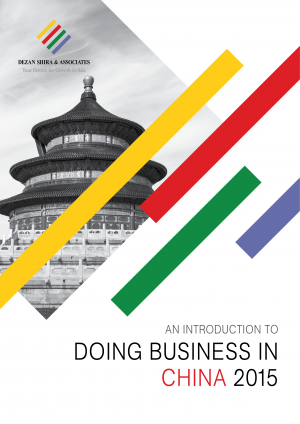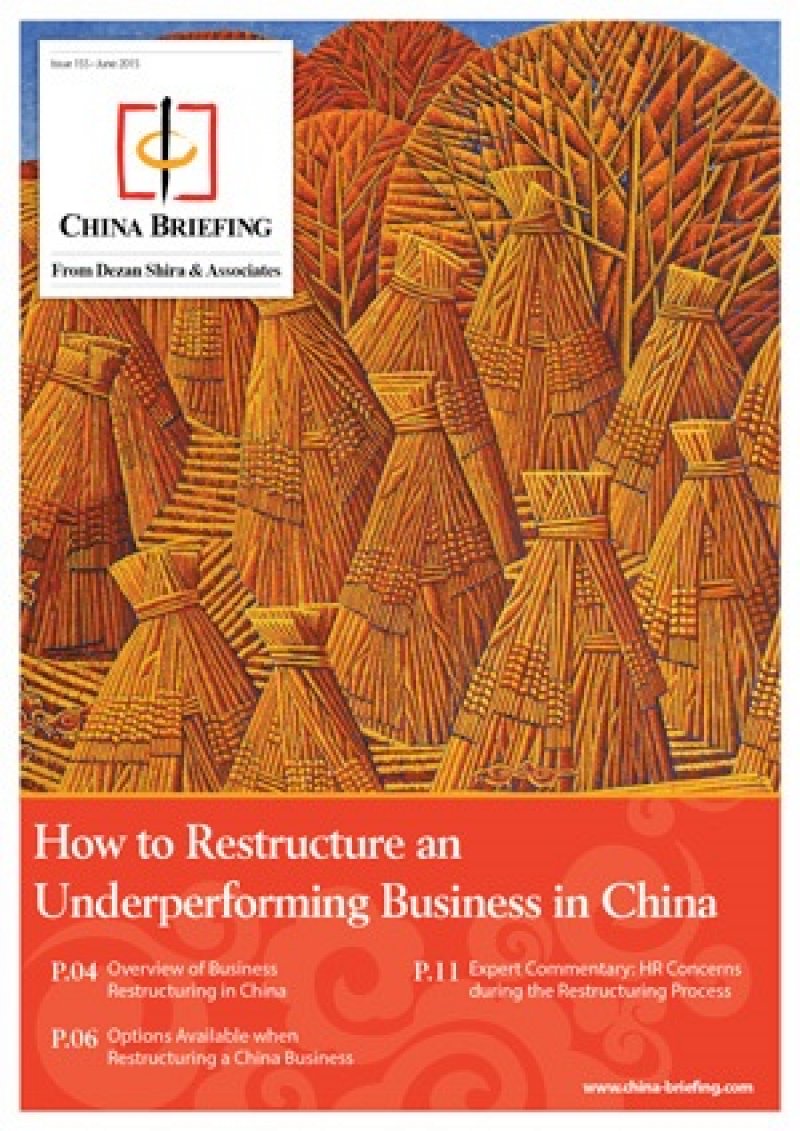China’s Economy and Trade with ASEAN: the Short and Long Term Outlook
Examined from a certain angle, China’s trade and business relationship with the Association of Southeast Asian Nations (ASEAN) is in a state of flux. A number of important questions currently face the two: as China’s workforce ages and labor costs rise, will the Middle Kingdom’s role as the “world’s factory” be surpassed by its ASEAN neighbors? As China’s growth slows, will this have a knock-on effect on ASEAN’s ten member nations? And how will this affect western companies doing business in the region?
China’s Economy and ASEAN Businesses: the Short Term Outlook
China’s 6.9 percent GDP growth rate in 2015 – its slowest in 25 years – ostensibly didn’t have an impact on ASEAN countries. Dun & Bradstreet’s ASEAN Business Confidence Index for Q1 2016 indicates that business confidence (measured by six metrics along nine sectors) is largely on the rise in the ten-nation bloc. Indonesia and Malaysia, which had previously shown low business confidence, have bounced back this quarter on all but one metric. Confidence in Thailand has also risen in all but one metric, while the Philippines’ grew on all counts. The main countries breaking this trend are Vietnam and Singapore, which have both seen a drop in business confidence.
Singapore’s current slump – ongoing from the previous quarter – is due to continuing problems in the city-state’s manufacturing sector. In Vietnam, however, the issue is expected to simply be a seasonal adjustment that will correct itself in the next quarter.
This healthy business confidence should provide a strong foundation for continued international trade.
![]() RELATED: Dun & Bradstreet: ASEAN Business Confidence Unfazed
RELATED: Dun & Bradstreet: ASEAN Business Confidence Unfazed
The Long Term Outlook: Will China’s “World Factory” Status Shift to South East Asia?
The idea that China’s low-end manufacturing industries will move to Southeast Asia is important. China’s relative percentage share in low-end exports has been falling slightly since 2010, and countries like Vietnam have become more attractive as outsourcing locations in recent years. Nevertheless, the scope of this shift should not be overestimated.
Reasons for low-end manufacturing relocating to Southeast Asia include:
- Rising wages in China;
- Worker demographics: China has an ageing population problem that many SEA nations do not;
- Countries like Vietnam are relatively close to South China (i.e., close to other components of the manufacturing-related global supply chain);
- ASEAN policies like the ASEAN Economic Community (AEC) aim to improve intra-regional connectivity and trade over the long term;
- Tariff barriers in trade between ASEAN nations have been greatly reduced in recent years.
However, there are also many reasons to doubt that ASEAN will totally replace China for manufacturing capacity. For example:
- With the obvious exception of Singapore, the infrastructure in Southeast Asia is lacking. This is reflected in the World Bank’s Logistical Performance Index, which often scores ASEAN nations poorer than China
- ASEAN countries collectively have a population of 600 million – less than half of China’s
- China’s manufacturing relies on unskilled laborers moving en masse from the poorer central and western provinces to the manufacturing clusters along the coast. Something similar will be difficult in Southeast Asia due to border controls
- Non-tariff barriers in ASEAN remain prominent. Most important are restrictions on foreign ownership, but other measures exist, such as export bans for certain industries in certain countries.
- Critics of the AEC policies (which are designed to turn ASEAN into a unified trading bloc) claim that the AEC will face strong political opposition when ASEAN member states try to apply them in their domestic political systems.
In summary, more low-end manufacturing clusters are likely to appear in the ASEAN region, and China’s relative share of overall low-end manufacturing will decrease. However, China will still maintain a strong presence in global manufacturing.
Trade between China and ASEAN will increase over the long term, as supply chains of certain globalized products become more stretched between China and Southeast Asia.
The implication for international businesses is that, when they are looking at investing or sourcing in the manufacturing sector, they are not simply looking at a China-ASEAN either/or question. Rather, they need to examine which specific parts in their supply chain would be better suited to China and which parts to Southeast Asia, which will affect their long-term product sourcing strategy.
The Long Term Outlook: China and ASEAN infrastructure
One of the difficulties in economic development in Southeast Asia is the region’s lack of effective infrastructure. This can be seen in the poor logistical efficiency of many ASEAN nations – even coastal countries like Vietnam and the Philippines rank poorly in the World Bank’s logistical performance index.
Infrastructure exporting is an area where China is able to excel. A recent example of this can be seen in the Indonesia-China joint venture high speed rail project in Java, Indonesia, which was launched January 21, 2016.
Individual projects like this are related to wider policies that aim to connect China to its neighbors, such as the Maritime Silk Road and the Asian Infrastructure Investment Bank. China’s exports of infrastructure projects will continue to be a feature of their trade with ASEAN.
 The Business Optimism Index, released every quarter by Dun & Bradstreet, is considered a leading economic indicator for turning points in business activity and measuring business sentiment. The Index captures business expectations for the quarter ahead based on six parameters: sales volume, net profit, selling price, new orders, inventory, and employment. Sampling in the Index represents key business sectors including manufacturing, construction, wholesale, transportation, services, finance, mining and agriculture, according to their GDP contribution in each nation. The Business Optimism Index, released every quarter by Dun & Bradstreet, is considered a leading economic indicator for turning points in business activity and measuring business sentiment. The Index captures business expectations for the quarter ahead based on six parameters: sales volume, net profit, selling price, new orders, inventory, and employment. Sampling in the Index represents key business sectors including manufacturing, construction, wholesale, transportation, services, finance, mining and agriculture, according to their GDP contribution in each nation.
The ASEAN Business Optimism Index for Q1 2016 is out now and available as a complimentary download in the Asia Briefing Bookstore. |
![]()
 An Introduction to Doing Business in China 2015
An Introduction to Doing Business in China 2015
Doing Business in China 2015 is designed to introduce the fundamentals of investing in China. Compiled by the professionals at Dezan Shira & Associates, this comprehensive guide is ideal not only for businesses looking to enter the Chinese market, but also for companies that already have a presence here and want to keep up-to-date with the most recent and relevant policy changes.
How to Restructure an Underperforming Business in China
In this issue of China Briefing magazine, we explore the options that are available to foreign firms looking to restructure or close their operations in China. We begin with an overview of what restructuring an unprofitable business in China might entail, and then take an in-depth look at the way in which a foreign company can go about the restructuring process. Finally, we highlight some of the key HR concerns associated with restructuring a China business.
 Adapting Your China WFOE to Service China’s Consumers
Adapting Your China WFOE to Service China’s Consumers
In this issue of China Briefing Magazine, we look at the challenges posed to manufacturers amidst China’s rising labor costs and stricter environmental regulations. Manufacturing WFOEs in China should adapt by expanding their business scope to include distribution and determine suitable supply chain solutions. In this regard, we will take a look at the opportunities in China’s domestic consumer market and forecast the sectors that are set to boom in the coming years.
- Previous Article China Market Watch: China GDP Growth, Drug Pricing Reform and E-Commerce Zones
- Next Article China Market Watch: Suspension of Investment Company Establishment and Smart Manufacturing in Shanghai




























